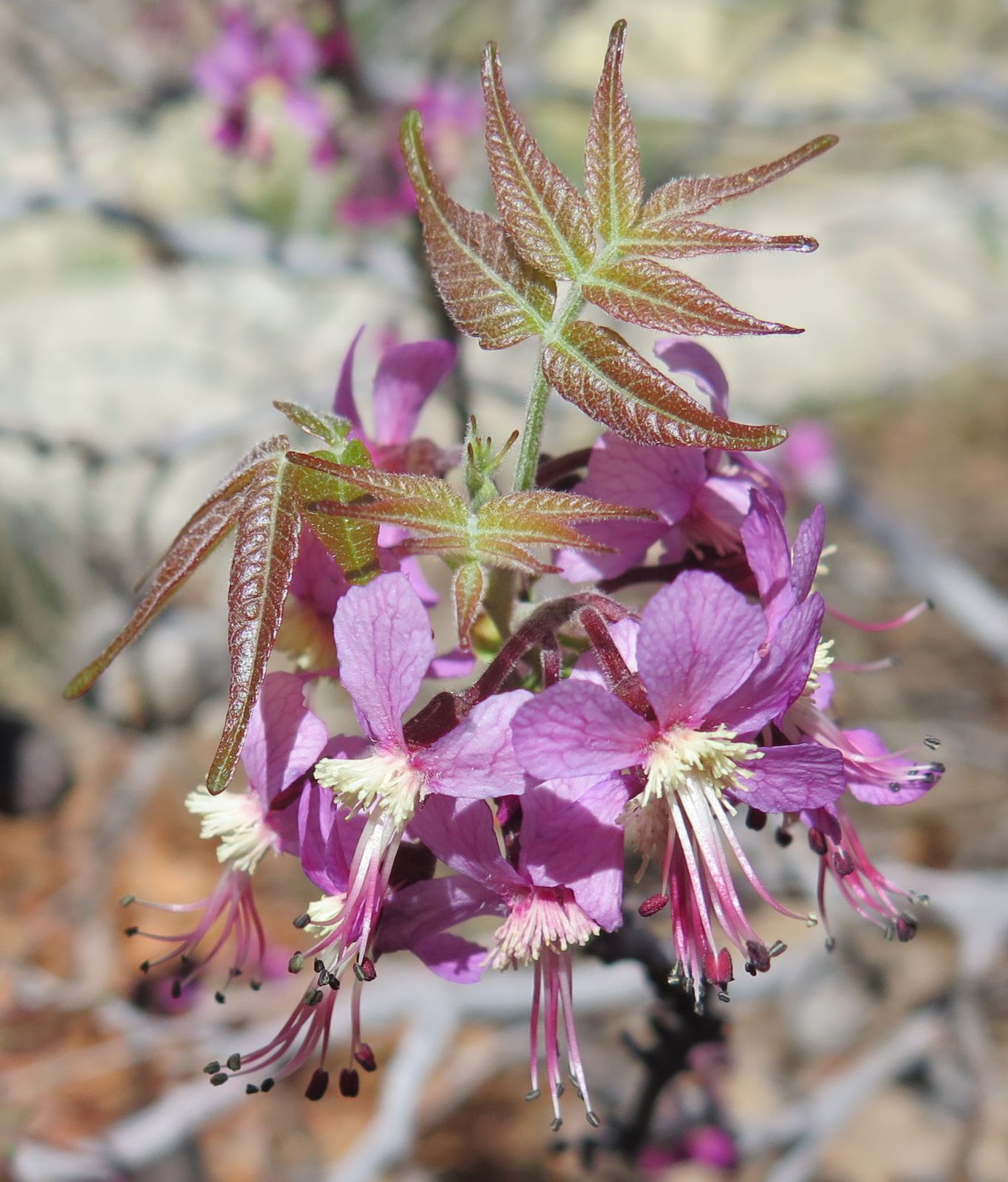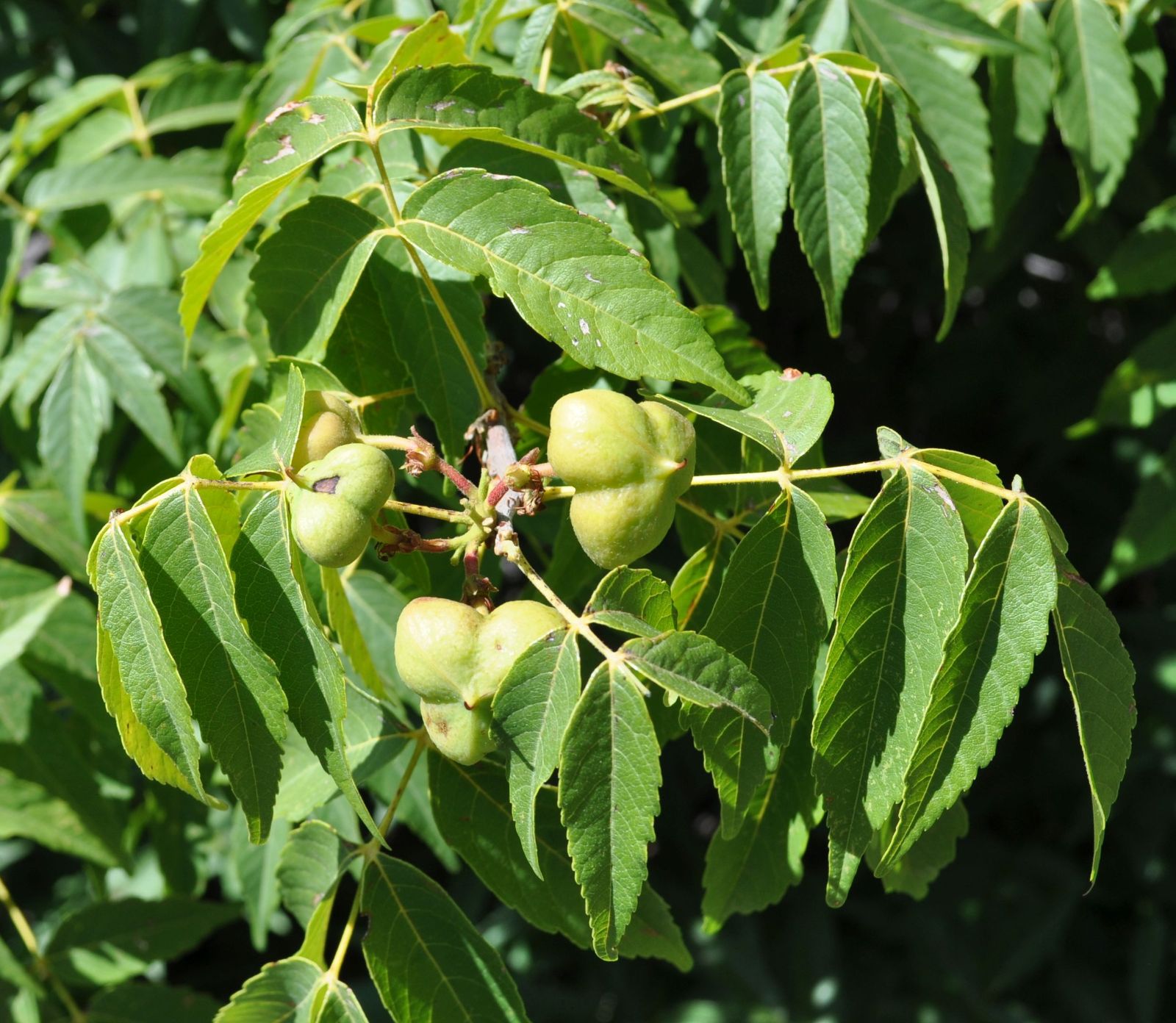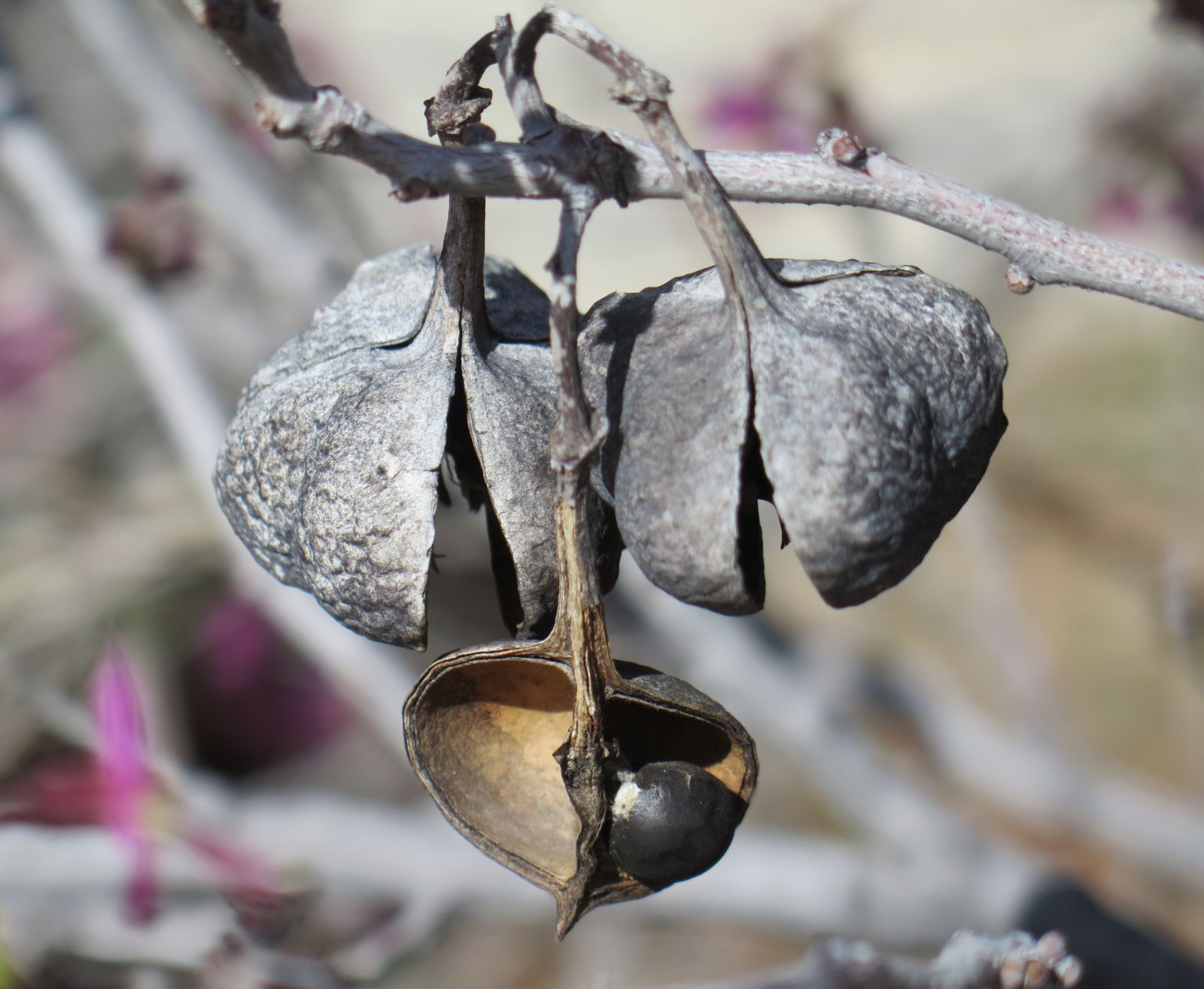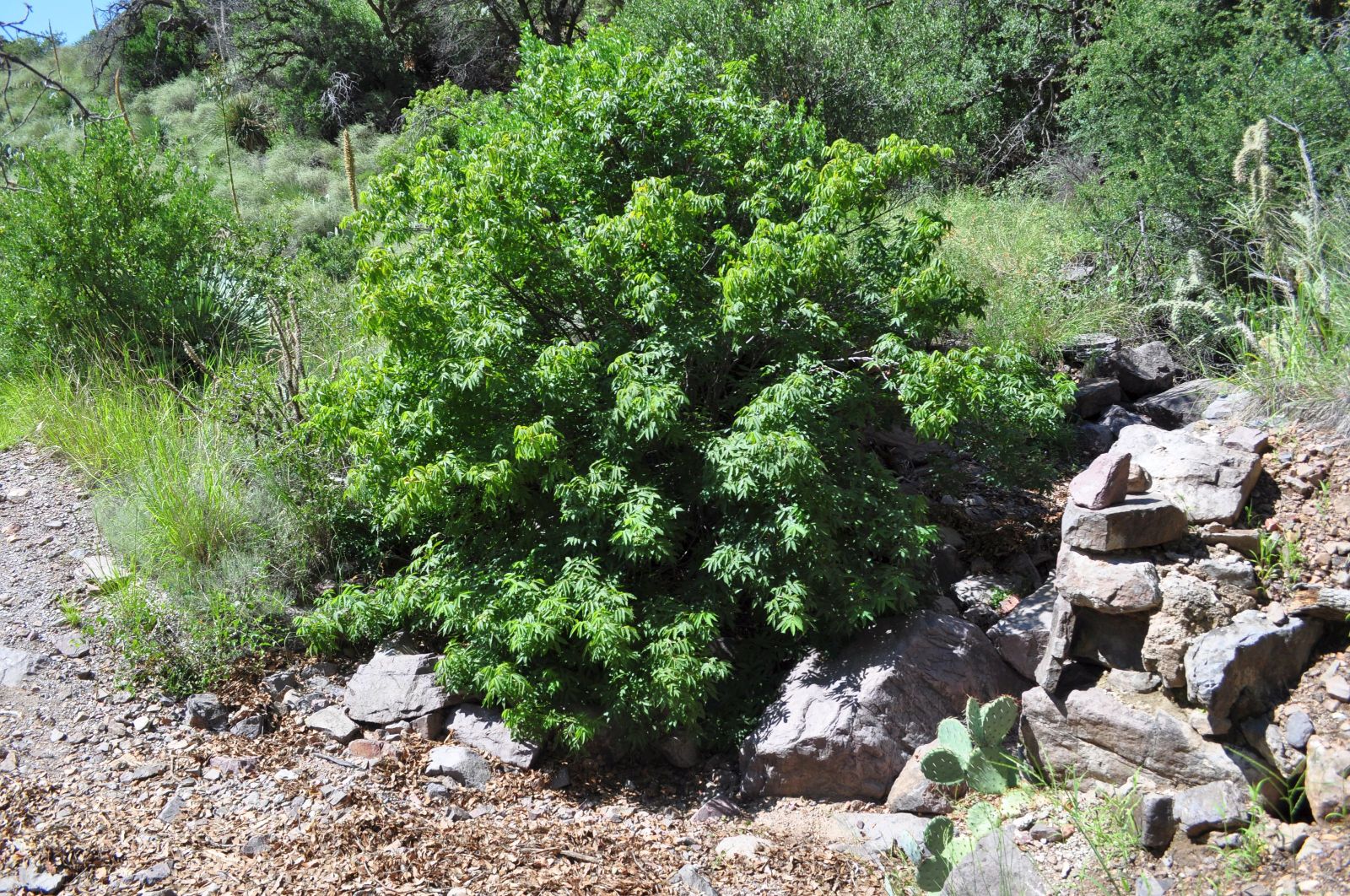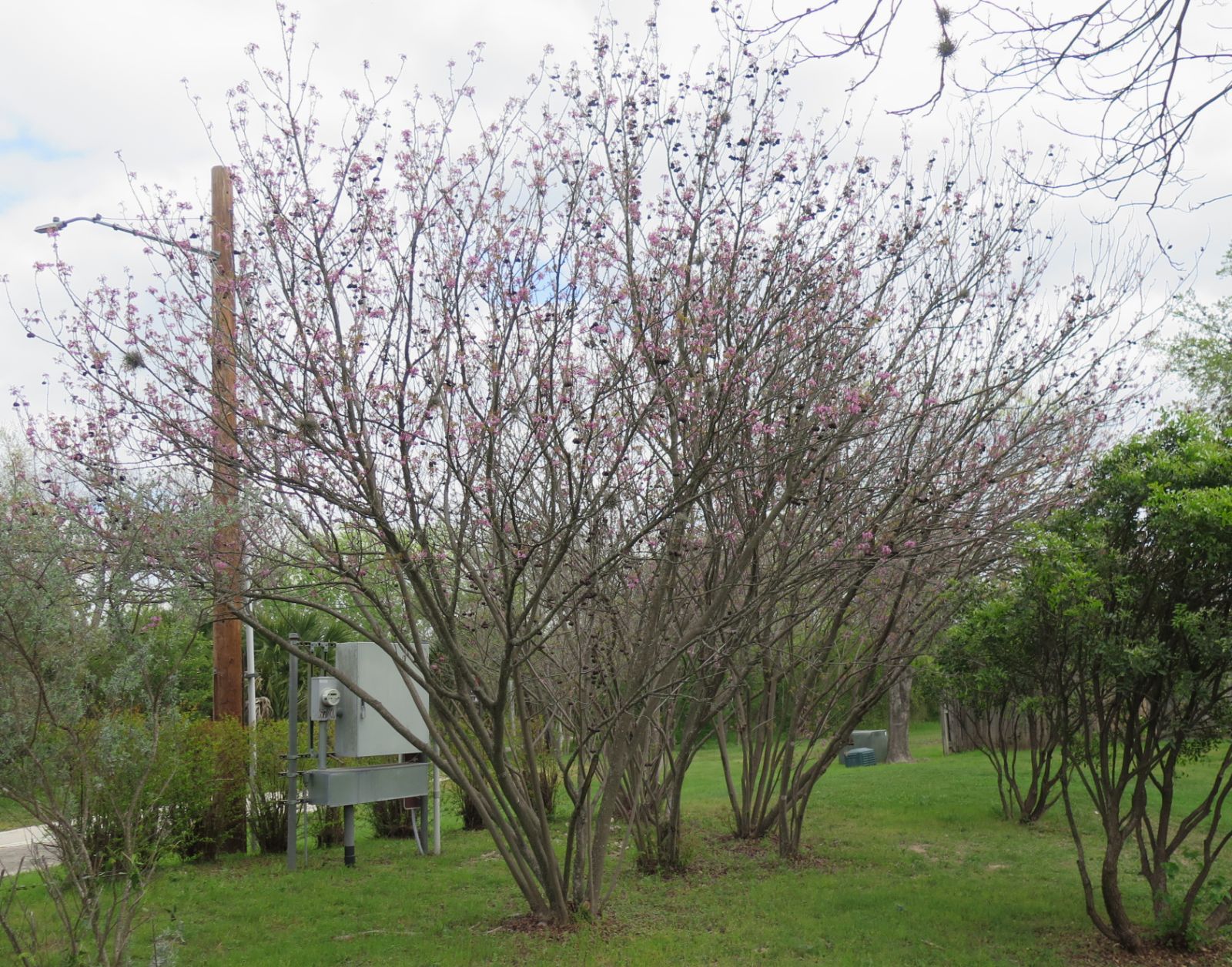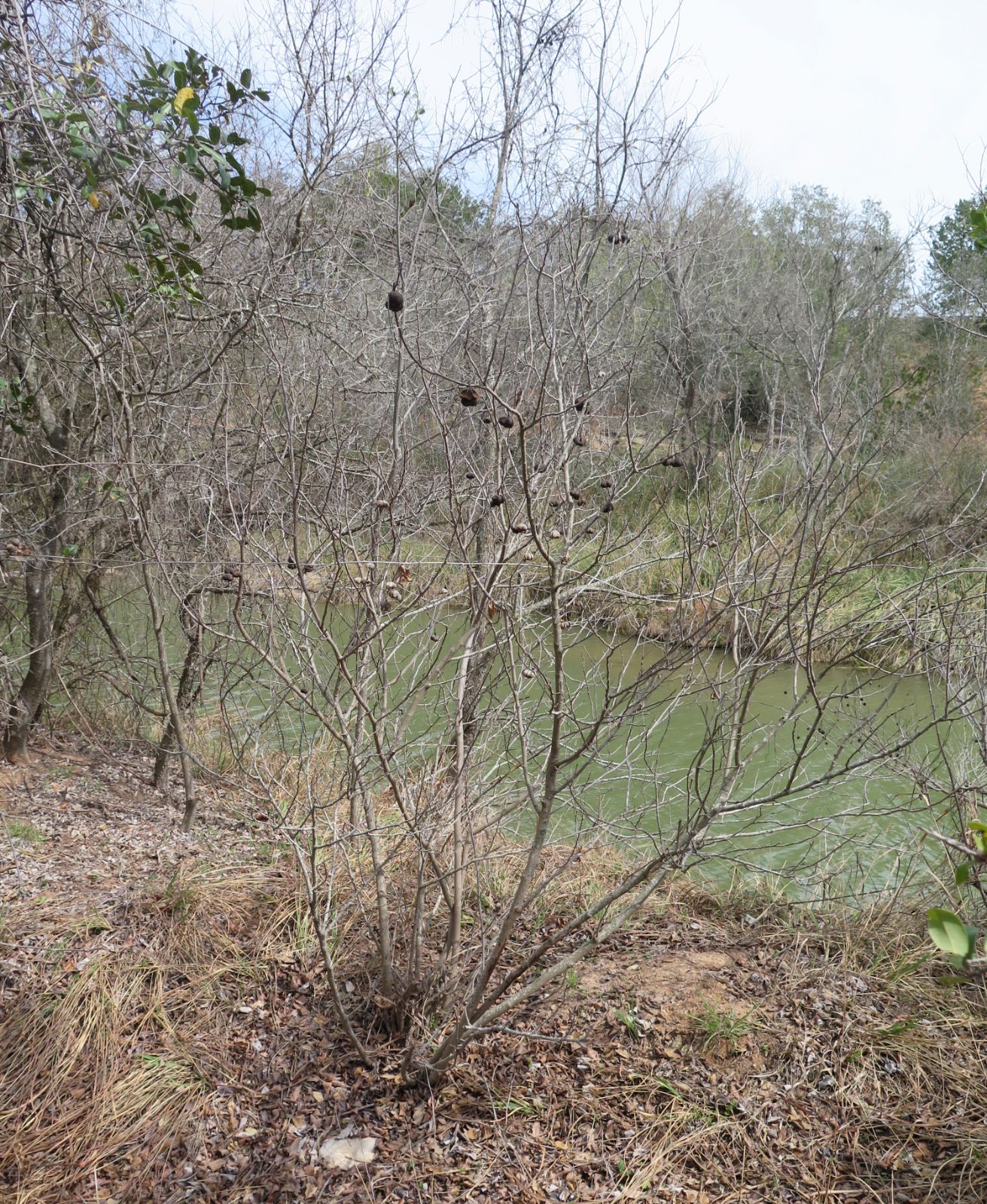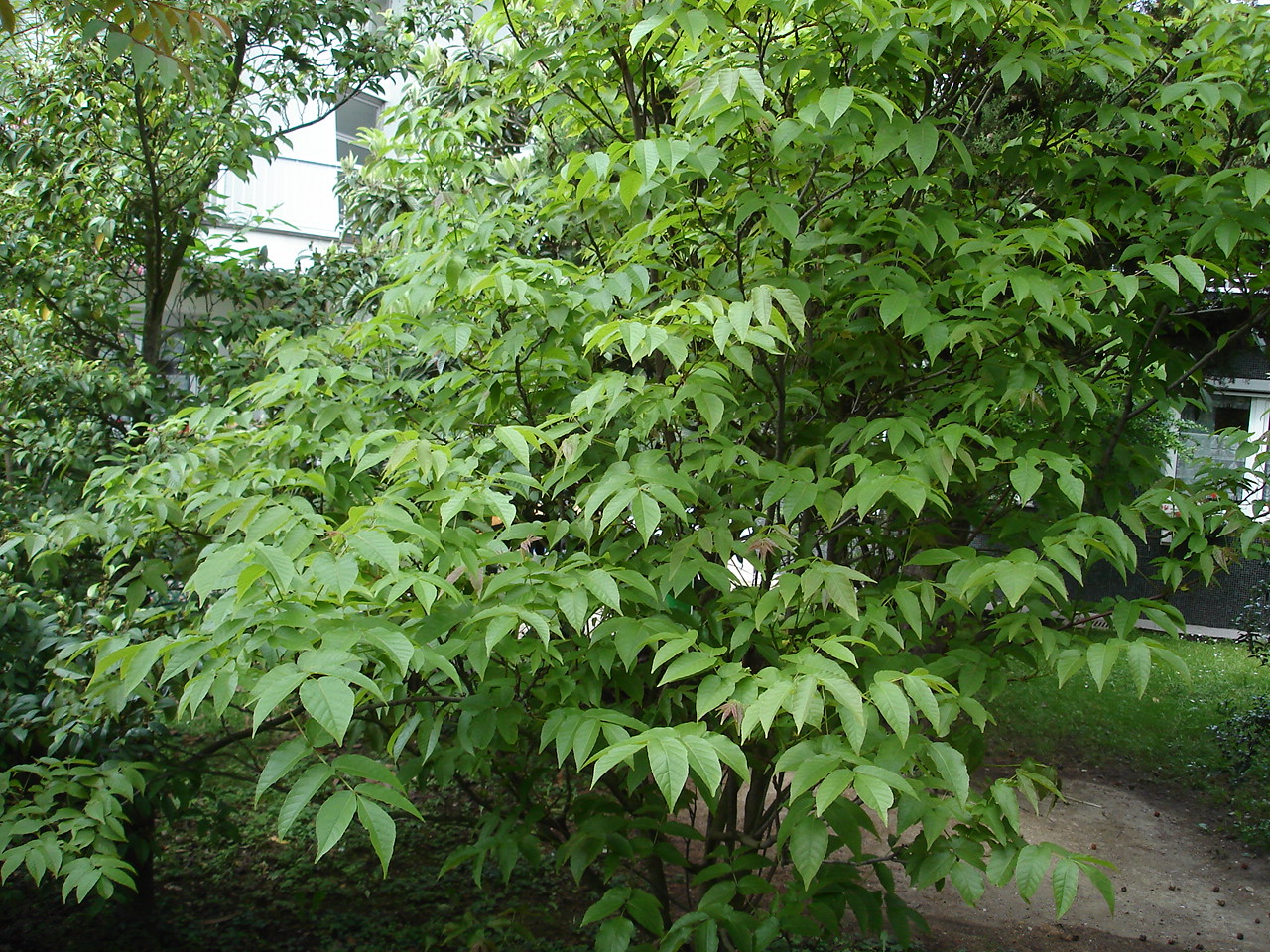Ungnadia speciosa
Credits
Article from Bean's Trees and Shrubs Hardy in the British Isles
Recommended citation
'Ungnadia speciosa' from the website Trees and Shrubs Online (treesandshrubsonline.
Genus
Common Names
- Mexican Buckeye
- Spanish Buckeye
Other taxa in genus
A deciduous shrub, or sometimes a small tree to about 35 ft high in the wild; winter-buds globose, many-scaled. Leaves alternate, odd-pinnate, on petioles up to 6 in. long; leaflets mostly five or seven, sometimes three, ovate-lanceolate, acuminate, 3 to 5 in. long, almost glabrous when mature. Flowers fragrant, about 1 in. across, borne in spring before or with the leaves in small clusters from the previous season’s wood. Calyx five-lobed. Petals four or five, obovate, clawed, spreading, bright rosy pink, crested with fleshy hairs at the apex. Stamens seven to ten, long-exserted. Style one, slender, with a minute stigma. Fruit a three-valved pear-shaped capsule, roughened but not prickly. Seeds globose, dark brown or black, about 1⁄2 in. wide.
Native of northern Mexico, extending into New Mexico and Texas, where, according to Sargent, it is commonest and attains its greatest size fifty miles from the coast west of the Colorado River. Although introduced in 1850, the Mexican buckeye is little known in this country. In old horticultural works it is mentioned as a shrub to be stood outside during the summer and overwintered under glass, but is probably hardy enough to survive most winters in Britain. There is, however, little hope of seeing unprotected plants in flower unless the wood is well-ripened before winter. It is certainly not a species for cool, rainy localities, and is most likely to succeed in eastern or south-eastern England, against a sunny wall.


